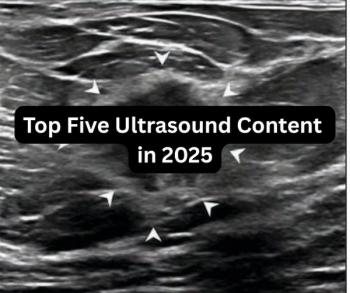
AI-Assisted MRI Could Eliminate Pre-Treatment Surgery for Brain Tumor
An artificial intelligence algorithm uses 3D MRI images to identify a specific genetic mutation that prompts tumor development.
A newly developed artificial intelligence (AI) tool can help providers determine the best treatment options for patients with glioma tumors without the need for pre-treatment surgery.
Neuroradiologists from the University of Texas Southwestern O’Donnell Brain Institute have designed an AI algorithm that can analyze 3D MRI brain images to identify a mutation in the gene isocitrate dehydrogenase (IDH) with 97 percent accuracy. IDH produces an enzyme that, when altered, may prompt the growth of tumors in the brain.
They published their study results in the Spring issue of
For years, researchers have been investigating the efficacy of imaging techniques in assessing brain cancer. This tactic is this most accurate and clinically viable method, according to Joseph Maldjian, M.D., chief of neuroradiology at UT Southwestern.
“Knowing a particular mutation status in gliomas is important in determining prognosis and treatment strategies,” he said. “The ability to determine this status using just conventional imaging and AI is a great leap forward.”
Traditionally, doctors must perform a pre-treatment brain surgery, obtaining a sample of the tumor, before they can pinpoint the most appropriate treatment option for the patient. But, the process can be time-consuming and tricky, especially if the tumor is located in a hard-to-reach spot in the brain. To side-step these issues, the UT Southwestern researchers used a deep-learning network and standard MRI to detect whether IDH is mutated.
The Imaging Technique
Having a better understanding of the IDH mutation can help providers choose from chemotherapy and radiation therapy or surgery for tumor removal. To help make that determination, Maldjian’s team developed two deep-learning networks that analyze imaging data from a publicly available database of more than 200 brain cancer patients nationwide.
The first network used one series from the MRI (T2-weighted images), and the second used multiple images types from the MRI. Both networks reached roughly the same level of accuracy, he said, indicating that using T2-weighted MRI images only could streamlines the process of detecting IDH mutations.
This technique is superior to previous detection methods, Maldjian said, in three ways:
- It’s more accurate. Previous strategies have predicted mutation status will less than 90-percent accuracy.
- A single series of MRI images, instead of multiple image types, can determine mutation status.
- Only one algorithm was needed to assess IDH mutation in tumors. Previous techniques required hand-drawn regions of interest or other deep-learning models that identified tumor boundaries.
Overall, Maldjian said, this is a positive step in the battle to treat brain cancer, but more work needs to be done to identify ways to inhibit IDH. That knowledge could be paired with AI-imaging techniques to create a paradigm shift in assessing and treating brain cancer.
“In the big picture, we may be able to treat some gliomas without operating on a patient,” he said. “We would use AI to detect an IDH-mutated glioma, then use IDH inhibitors to slow down or reverse the tumor growth. The field of radio-genomics is exploding with possibilities.”
Newsletter
Stay at the forefront of radiology with the Diagnostic Imaging newsletter, delivering the latest news, clinical insights, and imaging advancements for today’s radiologists.



























